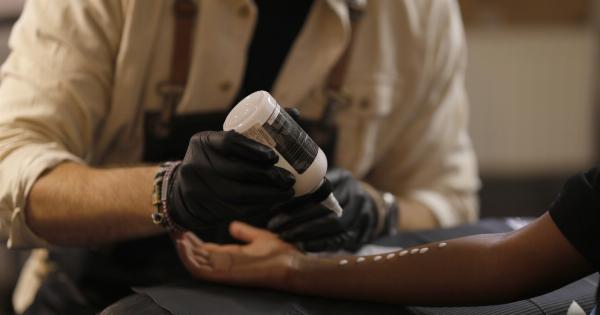Getting a tattoo can be a permanent commitment, but what happens when you want to remove it? Tattoo removal has become increasingly popular as more people have regrets about their ink.
Whether you’re no longer in love with your design, your tattoo has faded or aged poorly, or you’re seeking a job that doesn’t allow visible tattoos, there are several options available for tattoo removal. In this complete guide, we will walk you through everything you need to know about tattoo removal.
Types of Tattoo Removal
When it comes to removing tattoos, there are various methods available:.
1. Laser Tattoo Removal
Laser tattoo removal is the most common and effective method used today. It involves using laser technology to break down the tattoo ink particles so they can be eliminated by the body’s immune system.
Depending on factors such as tattoo size, color, and location, multiple sessions may be required to achieve the desired result.
2. Surgical Excision
Surgical excision involves cutting out the tattooed skin and sewing the surrounding skin back together. This method is typically used for smaller tattoos and may leave a scar.
3. Dermabrasion
Dermabrasion involves using a high-speed rotary device to sand the top layers of the skin where the tattoo is located. This process removes the tattoo pigment along with the outer layer of skin, allowing new skin to form.
Dermabrasion is less commonly used today due to its invasive nature and potential side effects.
4. Salabrasion
Salabrasion is an old-fashioned technique that involves scrubbing the skin with a salt solution to remove the tattoo. While it may be accessible and affordable, it is not as effective as other methods and can lead to scarring.
5. Creams and Tattoo Removal Products
There are numerous creams, gels, and tattoo removal products on the market that claim to fade or remove tattoos. However, the effectiveness of these products varies, and many are not regulated by the FDA.
It’s essential to do thorough research and consult with a dermatologist before using any of these products.
Choosing the Right Method
When deciding on a tattoo removal method, there are several factors to consider:.
1. Cost
The cost of tattoo removal varies depending on the method used and the size and complexity of the tattoo. Generally, laser tattoo removal tends to be the most expensive method, whereas creams and tattoo removal products are the least expensive.
2. Pain Tolerance
The level of discomfort experienced during tattoo removal varies with each method. Laser tattoo removal is known to cause some discomfort, similar to the feeling of getting a tattoo.
However, surgical excision and dermabrasion can be more painful, as they involve cutting into the skin.
3. Tattoo Colors
Some tattoo removal methods are more effective for certain colors. Laser tattoo removal is particularly effective for black, dark blue, and red tattoos, while other colors may require additional treatment or may be more challenging to remove.
4. Skin Type
Each individual’s skin reacts differently to tattoo removal methods. Skin type, tone, and sensitivity should be taken into consideration to minimize potential side effects such as scarring or skin discoloration.
Tattoo Removal Process
The tattoo removal process varies depending on the method chosen. However, here are the general steps involved:.
1. Consultation
Prior to any tattoo removal treatment, it is vital to have a consultation with a qualified professional. They will assess the tattoo, discuss the desired outcome, and recommend the most suitable treatment plan.
2. Preparing for Treatment
Depending on the method used, preparation for tattoo removal may involve avoiding sun exposure, shaving the area, and applying a topical anesthetic to minimize discomfort.
3. Treatment Sessions
Multiple treatment sessions are usually required for effective tattoo removal. The number of sessions depends on various factors, including tattoo size, color, and location.
4. Aftercare
After each treatment session, proper aftercare is essential to promote healing and minimize the risk of complications. This may include avoiding sun exposure, applying ointments or creams, and keeping the treated area clean and protected.
Expected Results and Risks
While tattoo removal can significantly fade or eliminate tattoos, complete removal may not always be possible. Factors such as tattoo size, color, and depth of ink affect the outcome.
Additionally, there are risks associated with tattoo removal, including scarring, infection, skin discoloration, and the possibility of an allergic reaction to the removal agent.
Conclusion
Deciding to remove a tattoo is a personal choice, and there are various methods available for tattoo removal.
It’s crucial to weigh the pros and cons of each method, consider individual factors, and consult with a professional before making a decision. Tattoo removal can be a long and sometimes costly process, so patience and realistic expectations are key. Regardless of the method chosen, understanding the tattoo removal process empowers individuals to make informed decisions about their ink.


























